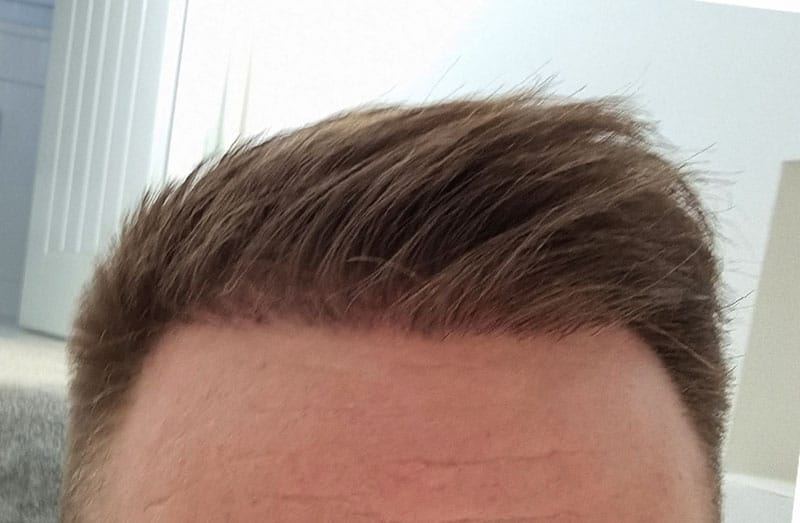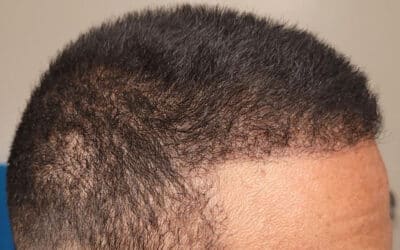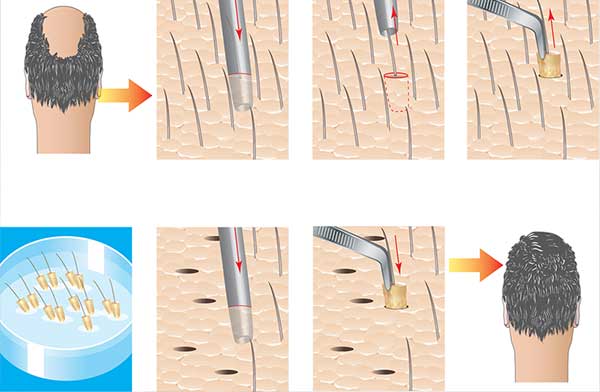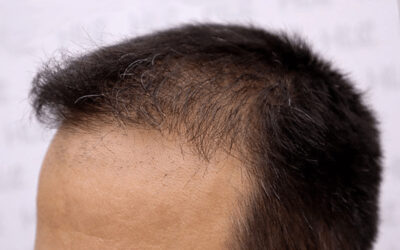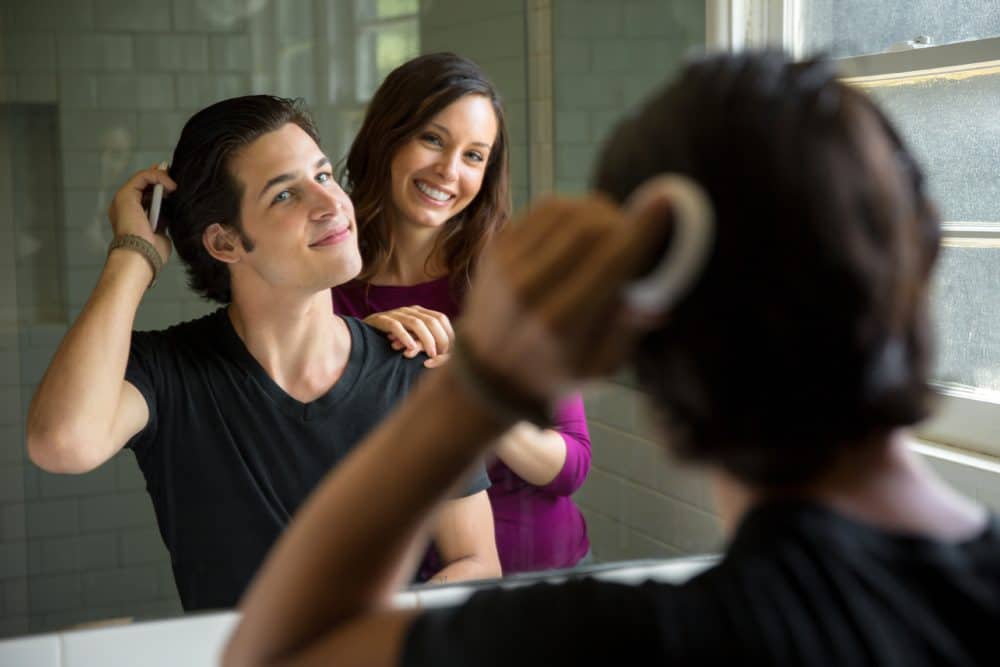Hair restoration in Los Angeles is changing rapidly due to the impact of FUE hair transplants. Departing from the cumbersome and discomforting methods of yesteryears, contemporary FUE techniques harmonize surgical precision with cutting-edge technology. The progression from thinning strands to a voluminous and vibrant hair crown has never been more elegantly orchestrated than it stands today.
Components of FUE Hair Transplant
Follicular Unit Extraction (FUE) Hair Transplant encompasses several integral components that collectively contribute to its comprehensive process:
- Consultation: Before the procedure, patients engage in an in-depth consultation with a qualified surgeon, which includes medical history, expectations, and personalized treatment plans.
- Preparation: On the day of the procedure, the donor area (usually the back of the head) is trimmed to facilitate optimal follicle extraction.
- Local Anesthesia: Local anesthesia is administered to ensure patient comfort during the procedure. This numbs the donor and recipient areas.
- Extraction of Follicular Units: Utilizing specialized instruments, individual hair follicles are meticulously extracted from the donor area. This process is performed with precision to minimize trauma and scarring.
- Follicle Preparation: Extracted follicles are carefully examined and prepared for transplantation. Excess tissue is trimmed, and the follicles are grouped into units for implantation.
- Recipient Area Preparation: Tiny incisions are created in the recipient area (balding or thinning region) where the follicles will be implanted. The angle and placement of these incisions are crucial for a natural appearance.
- Follicle Implantation: The prepared follicles are implanted into the recipient area with meticulous attention to detail. The surgeon follows the natural pattern of hair growth for optimal results.
- Post-Procedure Care: Patients receive post-operative care instructions, including prescribed medications and guidelines for scalp hygiene. Follow-up appointments are scheduled to monitor progress.
Hair Transplant Evolution
Below is a table summarizing the evolution of hair transplant techniques over the years, focusing on key developments, benefits, and drawbacks.
| Era | Technique | Key Developments | Benefits | Drawbacks |
| 1950s | Punch Grafts | Introduction of circular grafts | Simple and rudimentary procedure | Noticeable scarring, unnatural look |
| The late 1980s | Mini/Micro Grafting | Smaller grafts are used for a more natural look | Improved aesthetics compared to punch grafts | Still somewhat noticeable scarring |
| 1990s | FUT (Strip Harvesting) | Use of a strip of scalp from the donor area | More hair follicles transplanted at once | Linear scarring at the donor site |
| The early 2000s | FUE (Follicular Unit Extraction) | Individual follicular units extracted | Minimized scarring, shorter recovery time | Time-consuming, higher cost |
| 2010s-Present | Robotic FUE | Automation and robotics involved | Increased precision, less room for human error | Expensive, requires specialized equipment |
Who is the Ideal Candidate for FUE Hair Transplant?

Here are the ideal candidates for FUE hair transplant:
| Criteria | Description |
| Age | Between 21 and 65 years old. Hair loss is usually more stable in this age range. |
| Hair loss pattern | Male pattern baldness. This is the most common type of hair loss in men. |
| Donor area | Adequate hair density in the back and sides of the scalp. This is where the hair grafts will be taken from. |
| General Health | Good overall health. This is important to ensure that the patient can tolerate the procedure and that the grafts will take well. |
| Expectations | Realistic expectations about the results of the procedure. It is essential to understand that hair transplant surgery cannot completely restore hair loss. However, it can significantly improve the appearance of the scalp. |
Why Should I Consider FUE Hair Transplant in Los Angeles?
Here are some reasons to consider FUE hair transplant in Los Angeles:
- Experienced surgeons: Los Angeles is home to some of the world’s most experienced hair transplant surgeons. These surgeons have performed thousands of hair transplant procedures and have a proven track record of success.
- Ideal climate: Los Angeles has a warm and sunny climate year-round, ideal for hair transplant recovery. The warm weather helps to reduce swelling and bruising, and it also helps to promote healing.
- Advanced technology: Los Angeles is at the forefront of hair transplant technology. The latest techniques and equipment are available in Los Angeles, which can help to ensure a more natural-looking and successful hair transplant.
- Affordable prices: The cost of hair transplants in Los Angeles is comparable to other major cities in the United States. However, you may find lower prices if you shop around and compare different clinics.
- Variety of clinics: There are many hair transplant clinics to choose from in Los Angeles. This allows you to find the right clinic for you and your budget.
Post-Procedure Care and Maintenance

After undergoing an FUE procedure, patients must adhere to specific post-operative care guidelines to ensure the best results. This includes medication, hygiene practices, and regular follow-up appointments. Long-term maintenance may also involve additional treatments or products to sustain hair growth.
| Care Component | Description |
| Medication | – Antibiotics and anti-inflammatory drugs are often prescribed |
| Hygiene | – Proper scalp hygiene is crucial for healing |
| Follow-Up Appointments | – Regular check-ups monitor grafts and scalp health |
| Additional Treatments | – Some opt for supplementary treatments like PRP |
| Hair Growth Products | – Special shampoos and conditioners may be recommended |
| Lifestyle Changes | – Diet and exercise can impact the longevity of results |
The FUE hair transplant is revolutionizing the game in Los Angeles. It’s a much more advanced technique than older, painful procedures, and it uses surgical precision to tackle hair loss head-on. This makes it easier to reduce scars and speed up your recovery time. Going from thinning locks to a full head of luxurious hair has never been smoother!. We’re proud to make hair transplants affordable and help you save money on a variety of hair transplants.
Ready to embark on your transformation? Book a Consultation today to explore your personalized FUE hair transplant options and unlock the potential of the latest advancements in this life-changing procedure. To ensure your ease of mind, you can view our customer recommendations HERE. Furthermore, you can also see our Google reviews and Yelp reviews. We can’t wait to help you start restoring your lost hair.
YOUR HAIR RESTORATION SOLUTION
Best Hair Transplant
1970 S. Prospect Ave., Suite 2
Redondo Beach, CA 90277
(213) 403-0455
Frequently Asked Questions
Unlike the traditional strip harvesting method, which removes a strip of scalp tissue from the donor area, FUE involves the extraction of individual hair follicles. This minimizes scarring and shortens recovery time.
The cost of FUE Hair Transplant in Los Angeles varies depending on multiple factors, such as the surgeon’s expertise, the complexity of the case, and the number of grafts needed. Consultation with a specialized medical provider is essential for a personalized cost estimate.
Recovery time after an FUE Hair Transplant is generally shorter than traditional methods. Most patients can return to normal activities within 7-10 days.


